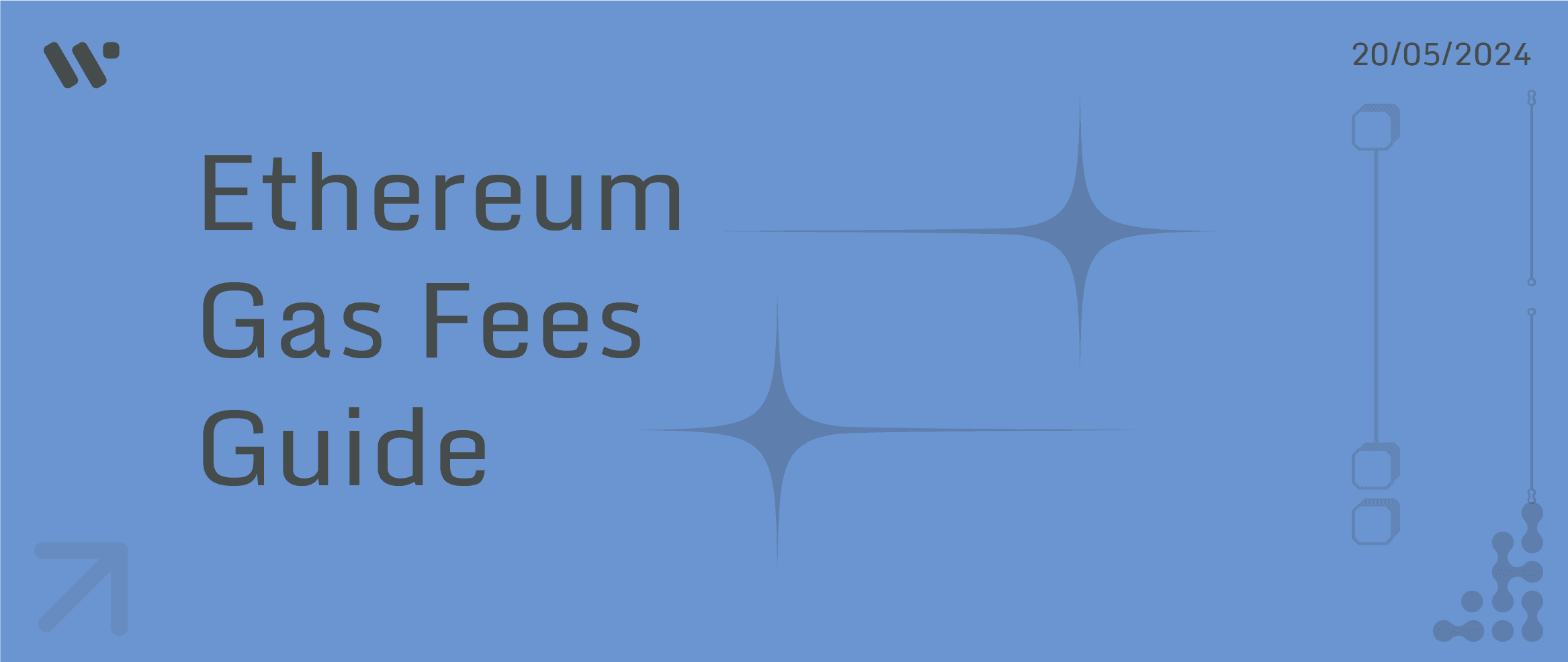Matthew Webb
Ethereum Gas Fees A Comprehensive Guide

Ethereum Gas Fees: A Comprehensive Guide
Introduction
As the Ethereum network continues to evolve and expand its reach, understanding the intricacies of its operational mechanisms becomes increasingly crucial for users and developers alike. At the heart of Ethereum's economic model lies the concept of gas fees - a fundamental yet often misunderstood aspect of the network. These fees not only power the execution of smart contracts and transactions but also play a pivotal role in maintaining the network's security and efficiency. In this comprehensive guide, we'll demystify Ethereum gas fees, exploring their purpose, structure, and far-reaching impact on the ecosystem. Whether you're a seasoned Ethereum user or a curious newcomer, this deep dive into gas fees will equip you with the knowledge to navigate the Ethereum landscape more effectively.
What are Ethereum Gas Fees?
In simple terms, Ethereum gas fees are a type of transaction fee that miners charge for processing transactions on the Ethereum blockchain. The term "gas" is used to describe the units of computational effort required to execute a specific operation on the blockchain. Each transaction requires a certain amount of gas to be executed, and this gas is paid in Ether (ETH), the native cryptocurrency of the Ethereum network.
Gas fees serve multiple purposes within the Ethereum ecosystem:
- Resource Allocation: They ensure that network resources are used efficiently by putting a cost on computation and storage.
- Spam Prevention: By making transactions costly, gas fees help prevent spam attacks and network congestion.
- Miner Compensation: Gas fees provide an incentive for miners to process transactions and maintain the network's security.
How Do Ethereum Gas Fees Work?
The process begins when a user initiates a transaction on the Ethereum network. The transaction is then packaged into a block by a miner, along with other transactions that are pending execution. To execute these transactions, miners must perform complex computations to verify the validity of each transaction and ensure that it adheres to the rules of the Ethereum protocol.
Such as fitting a certain amount of transactions based on gas into a block.
As seen in the example below, the average gas used per block:
And the max gas limit allowed per block:
Gas and Gas Price
To understand how gas fees work, it's essential to grasp the concept of gas and gas price. Gas is a unit of measurement for the computational effort required to execute a specific operation on the blockchain. Each operation, such as creating a contract or sending Ether, requires a certain amount of gas. Gas price, on the other hand, is the amount of Ether that a user is willing to pay per unit of gas.
Ethereum Gas Fee Calculation
The Ethereum gas fee calculation is a complex process that involves several factors, including:
- Gas usage: The amount of gas required to execute a specific operation.
- Gas price: The amount of Ether paid per unit of gas.
- Transaction size: The size of the transaction in terms of bytes.
The Ethereum gas fee can be calculated using the following formula:
Ethereum Gas Fee = (Gas Usage * Gas Price)
It's worth noting that after the implementation of EIP-1559, the gas fee structure has become more complex, introducing a base fee and an optional tip (priority fee) for miners.
Ethereum Gas Fee Structure
The Ethereum gas fee structure is designed to incentivize miners to prioritize transactions with higher fees. There are several types of gas fees on the Ethereum network, including:
- Base Gas: A minimum amount of gas required for each transaction.
As seen in the chart below, the team at wevr.ai created:
- Priority Gas: Additional gas paid by users to prioritize their transactions.
- Max Priority Gas: The maximum amount of gas that a user is willing to pay for priority.
Impact of Ethereum Gas Fees on the Network
Ethereum gas fees have a significant impact on the network, affecting both miners and users. Some of the key consequences include:
- Higher Transaction Costs: As gas fees increase, the cost of sending transactions also rises.
- Slower Transaction Processing: Miners may prioritize higher-fee transactions over lower-fee ones, leading to slower processing times for low-priority transactions.
- Increased Miner Incentives: Higher gas fees incentivize miners to process more transactions, increasing the overall security and decentralization of the network.
- Scalability Challenges: High gas fees can make certain applications or use cases economically unfeasible, highlighting the need for scalability solutions.
The Evolution of Ethereum Gas Fees
Ethereum's gas fee mechanism has undergone significant changes since the network's inception:
- Original Model: Initially, users specified a gas price and gas limit for their transactions.
- EIP-1559: Implemented in August 2021, this upgrade introduced a base fee that gets burned and an optional tip for miners, aiming to make gas fees more predictable and reduce fee volatility.
- Layer 2 Solutions: Various Layer 2 scaling solutions have emerged to address high gas fees, offering lower transaction costs for certain types of operations.
Best Practices for Managing Ethereum Gas Fees
To manage Ethereum gas fees effectively, users should follow these best practices:
- Use a Gas Estimator: Utilize gas estimators like Etherscan's Gas Tracker or Cryptoneur's Gas Calculator to determine the optimal gas price for your transaction.
- Choose the Right Gas Price: Select a gas price that balances between speed and cost, taking into account the current network congestion and gas prices.
- Use a MetaMask or Other Wallets with Gas Estimation: Many wallets, such as MetaMask, offer built-in gas estimation tools to help users optimize their transactions.
- Consider Off-Peak Hours: Gas prices tend to be lower during periods of reduced network activity. Consider timing non-urgent transactions during these periods.
- Explore Layer 2 Solutions: For frequent or smaller transactions, consider using Layer 2 solutions that offer lower fees and faster processing times.
The Future of Ethereum Gas Fees
As Ethereum continues to evolve, several developments could impact the future of gas fees:
- Ethereum 2.0: The ongoing transition to Ethereum 2.0, with its shift to Proof-of-Stake and sharding, is expected to significantly improve scalability and potentially reduce gas fees.
- Rollups and Other Scaling Solutions: The increasing adoption of rollups and other Layer 2 scaling solutions could offer users more options for low-fee transactions.
- Fee Market Evolution: Further refinements to the fee market mechanism may be implemented to optimize gas fee dynamics and network efficiency.
Conclusion
Ethereum gas fees are an essential aspect of the Ethereum network, enabling miners to prioritize transactions and incentivizing users to optimize their gas prices. Understanding how gas fees work is crucial for anyone looking to use the Ethereum network effectively. By following best practices and staying informed about gas fee developments, users can ensure smooth and efficient transactions on the Ethereum blockchain.
We encourage our clients to take full advantage of the extended market cycles and the educational resources available at Wevr. As the market matures, these longer phases provide valuable time for thorough analysis and strategic planning, enabling investors to make more informed decisions and optimize their investment outcomes. To stay ahead in this dynamic market, visit us at Wevr.ai and explore our diverse range of services tailored to enhance your trading strategies. Engage with our community on Twitter and keep up with our Crypto insights blog for the latest insights and updates. With Wevr, harness the full potential of blockchain technology and maximize your investment returns in this complex and ever-changing environment.
References
- Ethereum.org: "Gas"
- Etherscan: "Gas Tracker"
- Ethereum Improvement Proposals: "EIP-1559: Fee market change for ETH 1.0 chain"
- Ethereum Foundation Blog: "The Merge"
Related Posts





